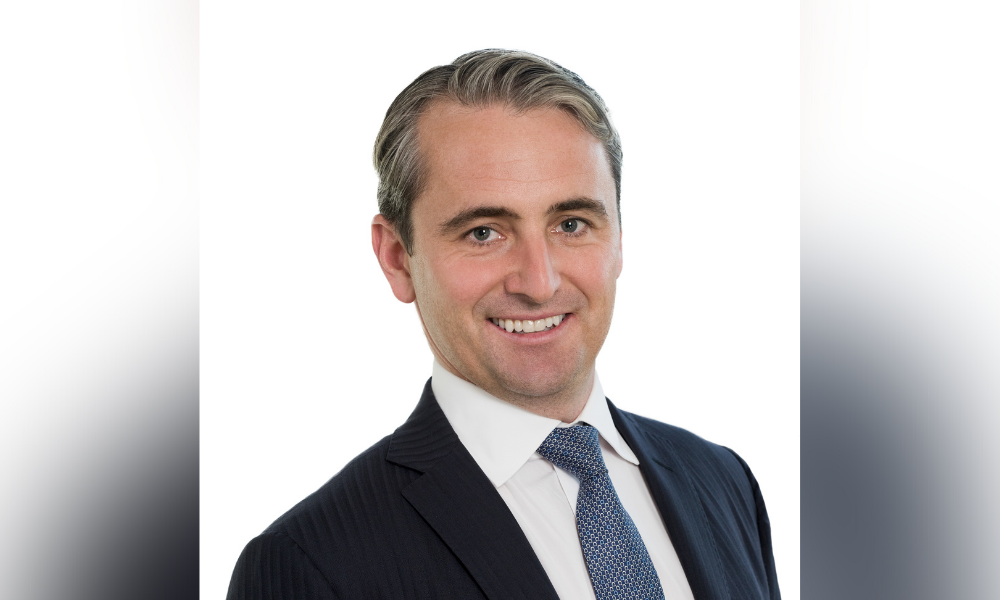And no more than this amount, he tells the RBA

Commonwealth Bank CEO Matt Comyn has urged the Reserve Bank to take a “gradual and modest” approach to raising the cash rate.
Comyn predicted the Australian economy’s strong post-pandemic momentum will continue until at least the end of next year, triggering multiple rate hikes starting in August. However, Comyn said the central bank should move cautiously in recognition of the housing market’s sensitivity to higher mortgage costs and lower expected inflation in Australia than other large economies, The Australian Financial Review reported.
CBA has projected that underlying inflation will average between 3% and 3.5% this year, above the RBA’s target range. Comyn said he expected the cash rate target to rise from its current record low of 10 basis points to 75 basis points by the end of the calendar year, and to 1.25% by “mid to late” 2023.
Comyn said that this pace of rate hikes could be absorbed by borrowers, leading to only modest drops in house prices. However, he felt more aggressive action by the central bank would increase the risk of damage to the economy, AFR reported.
“We think rates will go up quite slowly,” Comyn said. “We expect the strong economic momentum to carry through to at least the end of 2023 and feel very optimistic about the outlook for the Australian economy over this period.”
Comyn said that the impact of the Omicron variant had been “more modest than expected, with spending slowing only marginally.”
However, the prospect of interest rate hikes is the current obsession of market watchers and investors, who have differing views on the impact the expected rises will have, AFR reported.
CBA said that higher rates would give a boost to its net interest margin, which would be supported by fewer customers taking out lower-margin fixed-rate mortgages and allow banks to earn higher returns on their capital. Investors, however, worry about higher rates increasing bad debts, which would eat into bank profits and put the squeeze on the housing market.
“You have strong house prices, low unemployment and low bad debts given government support and interest rates being so low, but the flip side is, how much better can it get?” Hugh Giddy, senior portfolio manager at Investors Mutual, told AFR. “Even if interest rates go up, that may help net interest margin. But isn’t it going to put a brake on the economy and hurt banks, who have to provide more for bad debts, and maybe slow house price growth? If higher rates cause house prices to fall, you are going to have mortgage stress and more bad debts.”
CBA, however, said that multi-decade lows in unemployment, wage growth and high levels of household savings would work in banks’ favour, AFR reported. The bank expects that wages will push through 3% growth in the next few months, unemployment to be in the low 3% range, and consumer savings to be around $250 billion thanks to reduced pandemic spending. All of that will support credit quality, the bank said.
Read next: CBA profit sees massive jump
“We have the lowest unemployment rate in 13 years, and are going to touch on the lowest unemployment rate since the early 70s later this year,” Comyn said. “They are a very strong set of economic conditions showing Australia is performing well, and a good set of conditions for the Commonwealth Bank.”
Other fund managers agreed with Comyn that the RBA’s pace of rate increases and the jobs outlook will be critical factors to bank performance,
“In the absence of a deterioration in employment, most people should be able to handle small increases in interest rates,” Nick Vidale, investment analyst at T. Rowe Price, told AFR. “But if interest rate increases become prolonged and larger than the market is thinking, that could become an issue for higher impairments in the next couple of years.”
A 1% hike in the cash rate on an average $600,000 mortgage would mean $6,000 more in annual interest payments, or about $8,000 pre-tax, AFR reported.
“Even if the cash rate increases by, say, 100 basis points over the next year or year-and-a-half, the increase in the repayment amount will be modest compared to what we have seen in other cycles,” Comyn said.
Comyn said that the prospect of the cash rate risking to 75 basis points by the end of 2022 and 1.25% in 2023 could pull house price growth back to about 4% to 7% this calendar year, before prices fall between 5% and 10% in 2023. Those numbers “shouldn’t give our customers too much cause for concern,” he said.
However, a breakout in inflation – which could be caused by continued supply-chain disruptions – could cause the RBA to hike rates more aggressively, according to AFR. That, in turn, could lead to steeper house-price drops. However, for now, “the inflation risk does not appear as extreme in Australia” as in the US or Britain, Comyn said.



